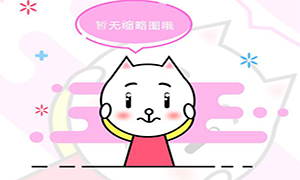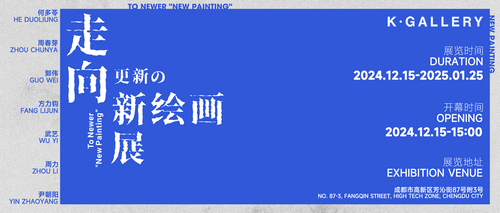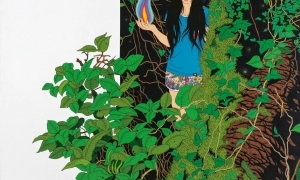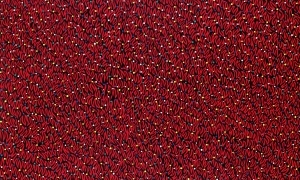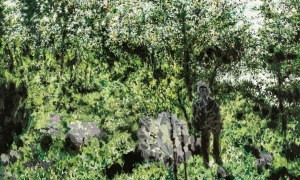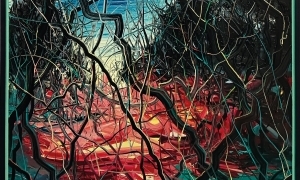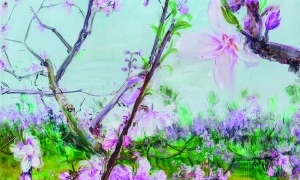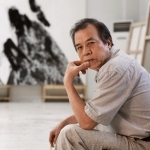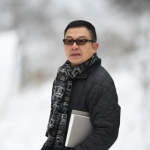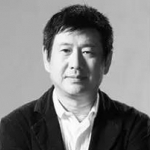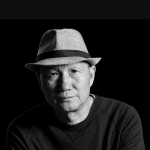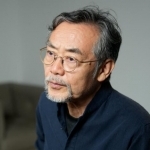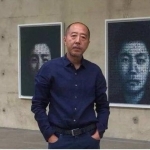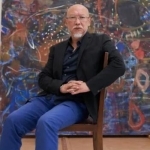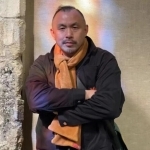蒋建军的智慧集中体现在他对“线”的使用上。在他的作品中,“线”既是自然的,也是文化的;既是作品的语言,也是作品的形式;既是作品的媒介,也是传达观念的载体。然而,这些线所具有的不同品质都来自于艺术家的创作过程。他的创作过程既简单又复杂。简单的是他直接将各种色彩的线粘贴到画布上。由于二维的平面不会让观众产生空间的幻觉,此时的线便向本身的物性回归,即回归媒介本身的自然属性。游走的线代表着连绵不断的时间,整个创作的体验实际上也是对“时间”的体验。但是,一旦线条结束,整个体验也就结束了。最后,“时间的印记”变成了一片抽象的线。作品的叙事意义消失了,作者消失了,惟有那些看似抽象的图式在提醒着我们,除了线条,什么也没有。这是一种解构主义的策略,也是一种对既定绘画观念的否定与超越。长期以来,人们相信艺术家能赋予作品以意义和价值,然而,在蒋建军的作品中,因为画面没有了图像,所以抽象的线拒绝一切来自于社会学意义上的各种阐释。相反,意义只是体现在过程之中,体现在线条游走在画面的时间之中。
除了对线的观念性表达外,蒋建军作品的另一特点便是线本身的材料物性。在西方,艺术家对于材料本身表现力的强调已经有近150年的历史了,从现实主义的库尔贝到立体主义的实物拼贴,再到西方60年代的极少主义,作为艺术媒介方式的材料从未有过如此独立的表现力。尽管我们可以说,随着西方现代主义的没落,西方艺术家对材料本身的重视,已经不再是一个值得留意的艺术问题,但在中国,这个问题却一直没有得到深入的讨论。在中国大部分艺术家的理解中,材料始终是为作品的主题服务的,与作品的主题和意义相比,材料永远都是处于从属的、非独立的婢女状态。尽管从学术上讲,对材料独立的讨论仍停留在现代主义的美学范畴,并未进入观念的层面,但并不能说对材料意义的重新认识就不具有当下的意义。
尽管蒋建军的作品在形式上十分接近西方抽象艺术的形式外观,但在作品的观念表达上,则是不相同的,因为“线条游走的时间”本身就具有一种逃离了形式的主体体验。由于对材料物性的表现也使其作品具有了某种实验意义。但是,这并不妨碍蒋建军的作品具有后抽象绘画的品质。
何桂彦
Jiang Jianjun features the use of “line”. In his works, “line” is natural and cultural as well. It is the language of works, but also the format; it is not only the media, but also the carrier of the works to deliver the concept. But, what the line carries is from his creation process, which is not only simple, but also complicated. For the simplicity, he just sticks the colorful lines to the canvas. Because the two-dimensional plane will not produce the illusionary feeling to audience, the line is just the line itself. Moving line stands for the continuing time and the feeling of creation is that of time. But once the line is over, no feeling at all. At last, “marks of the time” become group of abstract lines. The meaning of narration disappear, so does the painter. Only the abstract format left to remind us that there is nothing at all except the line. This is the strategy of deconstruction and also the denial and exceed of established painting concept. For long, it is believed that artists attach the meaning and value to works. Because there is no image in his works, the abstract lines refuse various explanations from sociology. In the contrast, it is in the process and in between the lines.
Except the conceptual expression of the line, another character of his works is the material of the line itself. In the west, artists have emphasized the role of material in artworks for 150 years from Courbet featured with realism to cubism of collage and then to the minimalism in 1960s in the west. It has never played such an independent role as a medium. Although focus on the material by western artists has never been an eye-catching problem along with the down of the western modernism, it has never been deeply discussed in China. Most thought that material exists for works, and it is always in a minor state compared with the theme and value of the works. Discussion on material is still about the modernism of aesthetics, but not concept, which does not mean that recognition on material is nonsense nowadays.
Although works by He Jianjun is so close to the appearance of western abstract art, it is different on conceptual express. “Time of line moving” is a kind of experience nothing to do with format. Even though works by Jiang Jianjun are still featured with post-abstract paintings, the expression of material endues certain experimental meaning with his works.
He Guiyan



